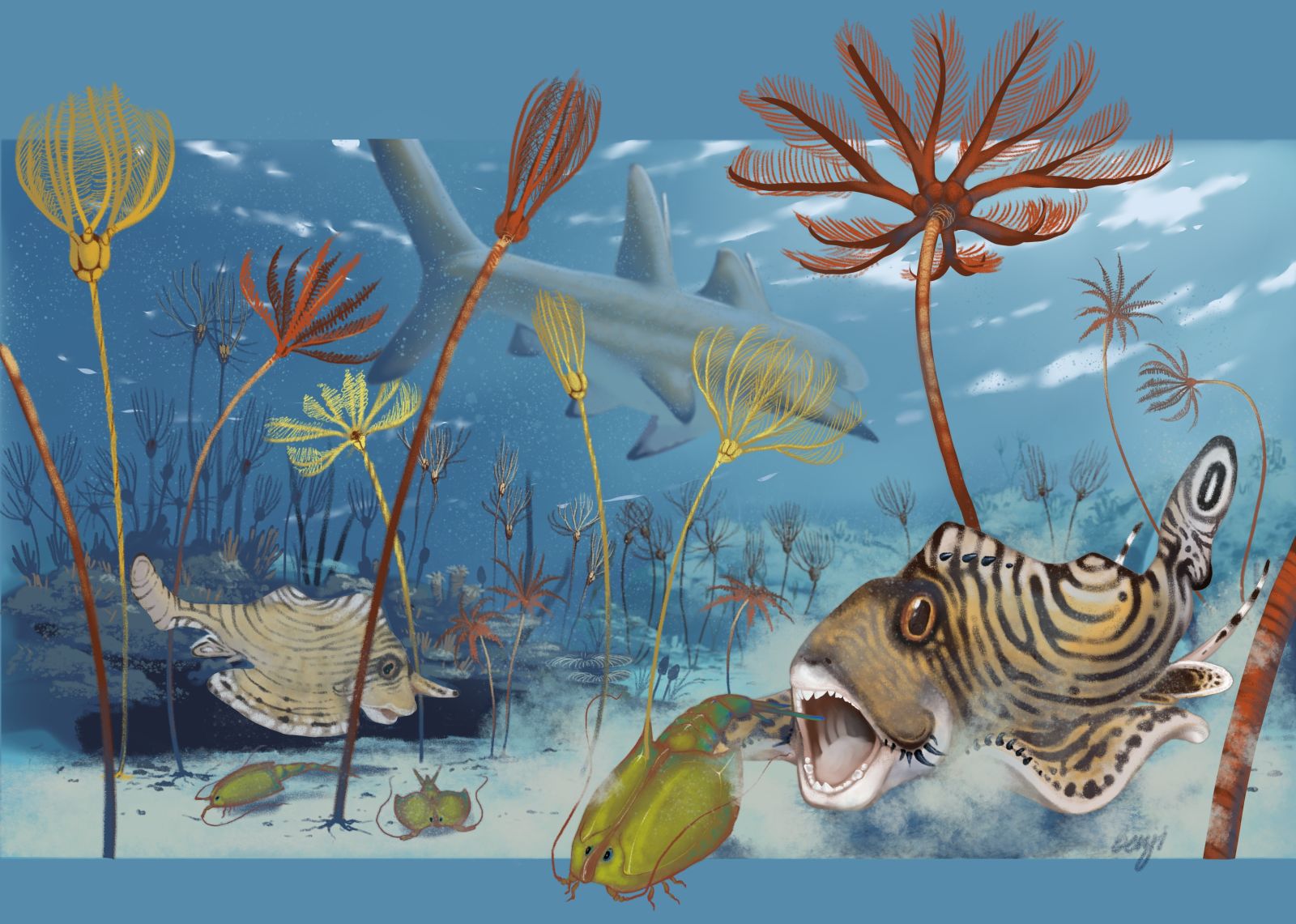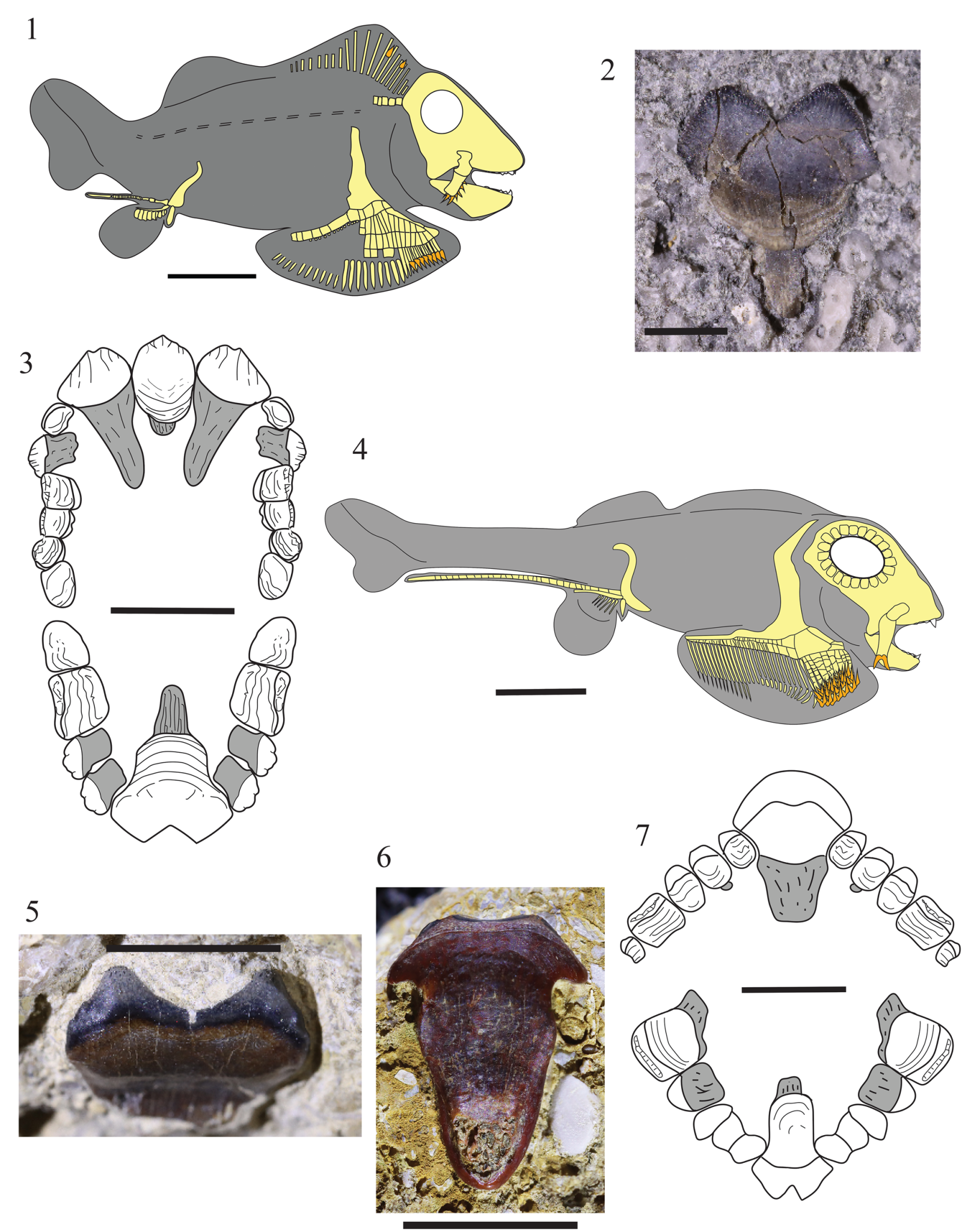Discovery in a cave of a tiny shark with "nails" for teeth 🦷
Published by Cédric,
Article author: Cédric DEPOND
Source: Journal of Paleontology
Other Languages: FR, DE, ES, PT
Article author: Cédric DEPOND
Source: Journal of Paleontology
Other Languages: FR, DE, ES, PT
Follow us on Google News (click on ☆)

Depiction of a male and female Clavusodens (4 inches long) hunting primitive crustaceans on the seafloor that covered much of central Kentucky during the middle Mississippian, 340 million years ago.
Illustration: NPS / Benji Paysnoe.
This discovery, published in the Journal of Paleontology, is part of a larger project to catalog fossils from Mammoth Cave in Kentucky. Scientists are exploring geological layers dating back to the Carboniferous period, when the region was covered by a warm ocean teeming with diverse marine creatures.
A shark with unusual teeth
Clavusodens mcginnisi measured between 3 and 4 inches (8 to 10 cm), earning it the nickname "chipmunk shark." Its posterior teeth, flat and elongated, resembled rusty nails, while its anterior teeth were more pointed. This dentition suggests a diet of crustaceans, worms, and small brachiopods, which it likely crushed.
This small shark belonged to the obruchevodid group, cartilaginous fish specialized for reef life. These animals were among the most specialized of their time. Their small size allowed them to escape predators while exploiting ecological niches inaccessible to larger species. Their unique morphology, particularly their nail-shaped teeth, indicates they were perfectly adapted for crushing hard-shelled prey like crustaceans.

1) Skeletal reconstruction of Netsepoye hawesi based on the holotype CM 46092 from the Heath Formation (Montana).
2) Lower symphysis tooth of N. hawesi (ALMNH:Paleo:20553) from the Bangor Limestone (Alabama).
3) Revised reconstruction of the upper and lower dentition of N. hawesi.
4) Reconstruction of Obruchevodus griffithi based on the holotype CM 48833 from the Heath Formation (Montana).
5) Upper symphysis tooth of Fissodopsis robustus (ALMNH:Paleo:20556).
6) Partial lower symphysis tooth of F. robustus (ALMNH:Paleo:9774).
7) Revised reconstruction of the upper and lower dentition of F. robustus based on the holotype CM 62710 from the Heath Formation (Montana).
Scale bars: (1, 4) = 10 mm; (2, 5, 6) = 5 mm; (3) = 4 mm; (7) = 20 mm.
Researchers believe Clavusodens mcginnisi thrived in reef environments populated by crinoids and other marine invertebrates. These resource-rich habitats provided this small predator with shelter and an abundance of food. This discovery highlights the importance of small animals in ancient ecosystems and their role in the marine food chain.
Mammoth Cave, a paleontological treasure
Mammoth Cave, with its 400 miles (650 km) of explored passages, is an exceptional site for studying marine fossils. The rocks of the Sainte-Geneviève Formation, where Clavusodens mcginnisi was discovered, date back to 330 to 323 million years ago. They preserve the remains of a reef ecosystem rich in marine invertebrates, such as crinoids and corals.
Since 2019, over 70 species of fossil fish have been identified in the cave, including several previously unknown. These discoveries, often made under challenging conditions, shed light on the evolution of sharks and ancient marine ecosystems. Researchers sometimes have to crawl long distances through narrow tunnels to access fossils, often embedded in ceilings or walls.
The paleontological inventory project at Mammoth Cave aims to document and preserve these fossil treasures. Each new discovery, like that of Clavusodens mcginnisi, enriches our understanding of Carboniferous marine biodiversity. These fossils offer a unique window into a vanished world, where small sharks like this one played a significant role in reef ecosystems.